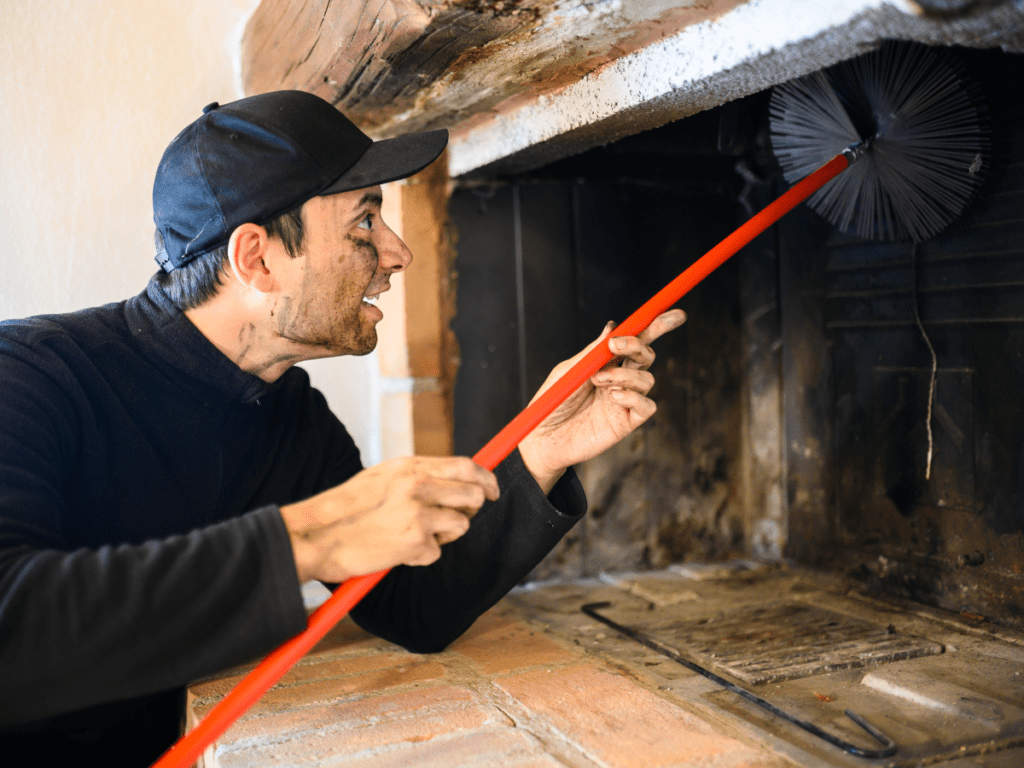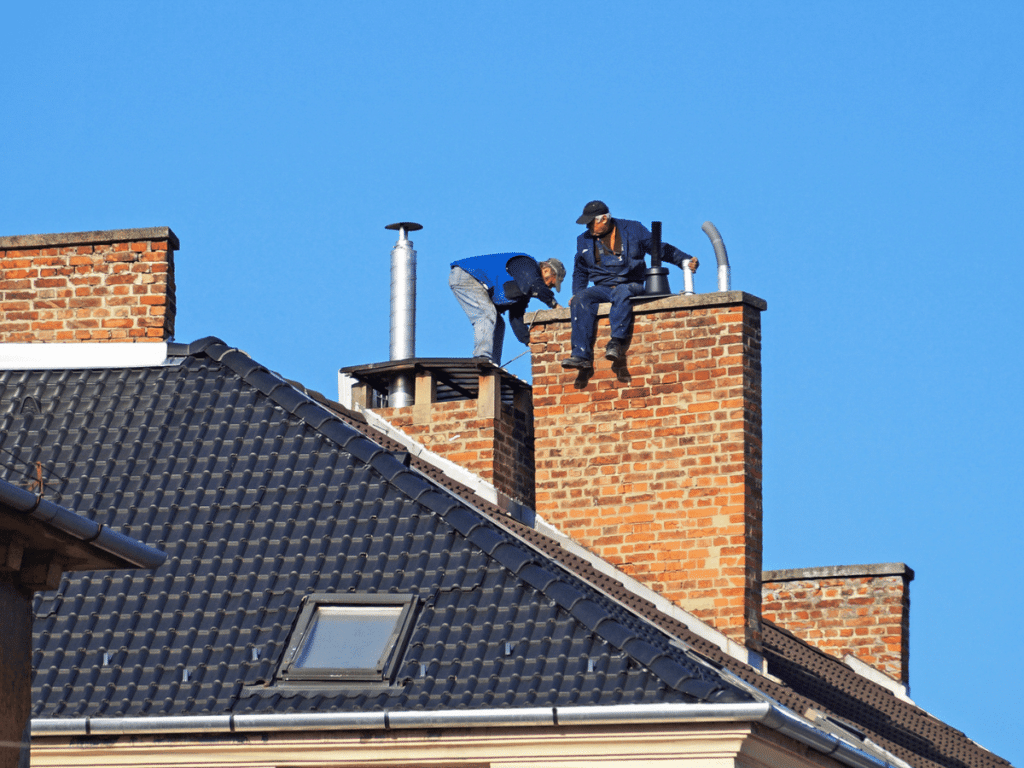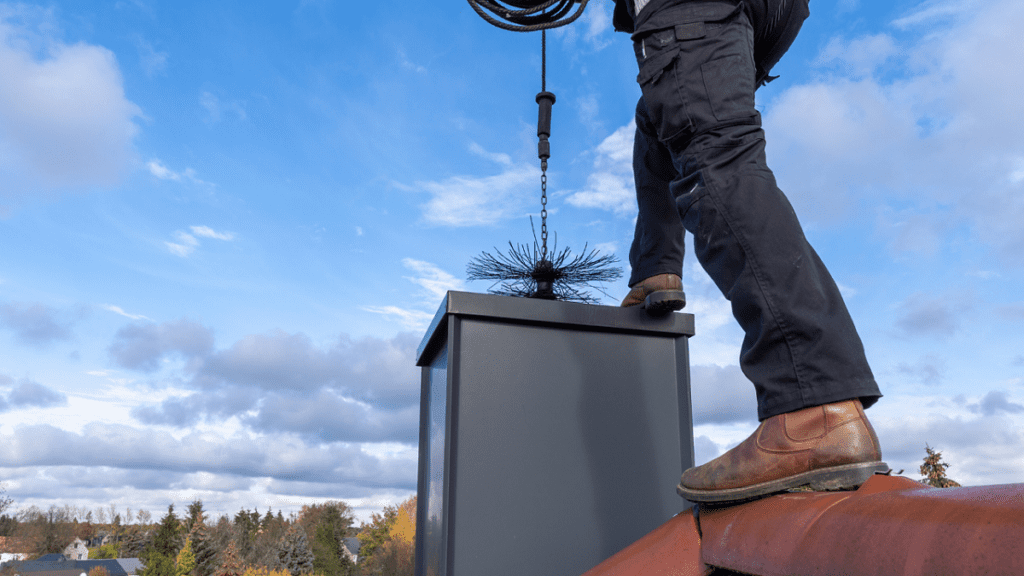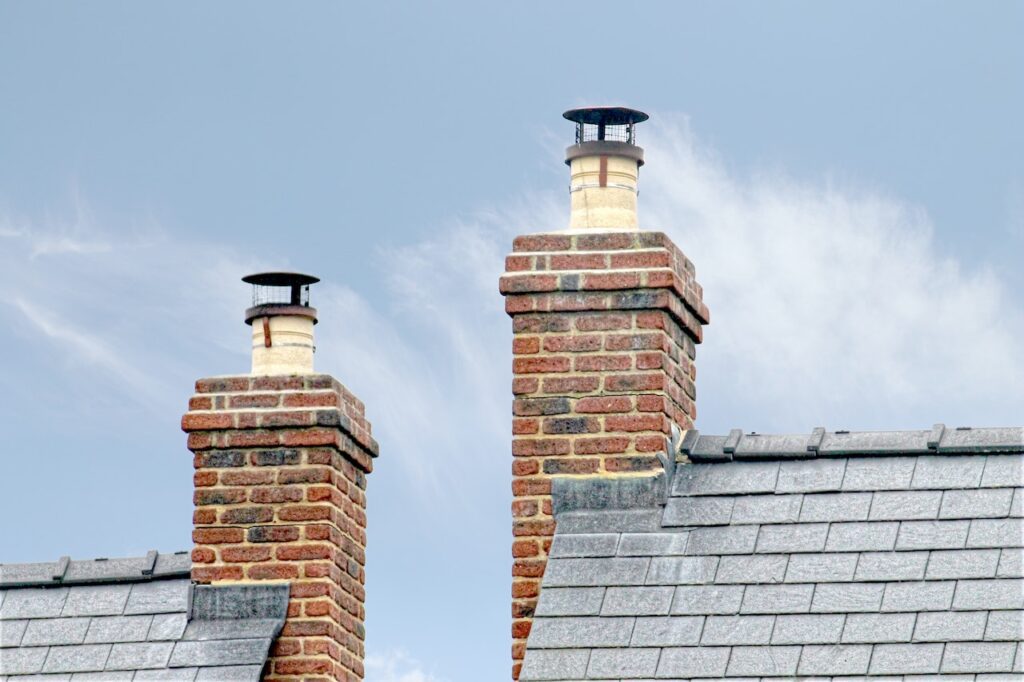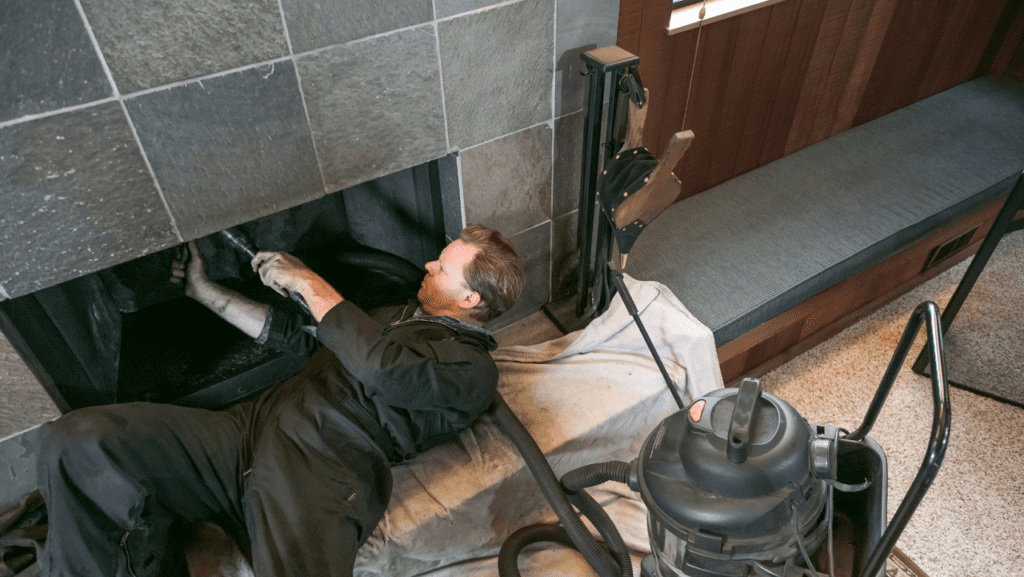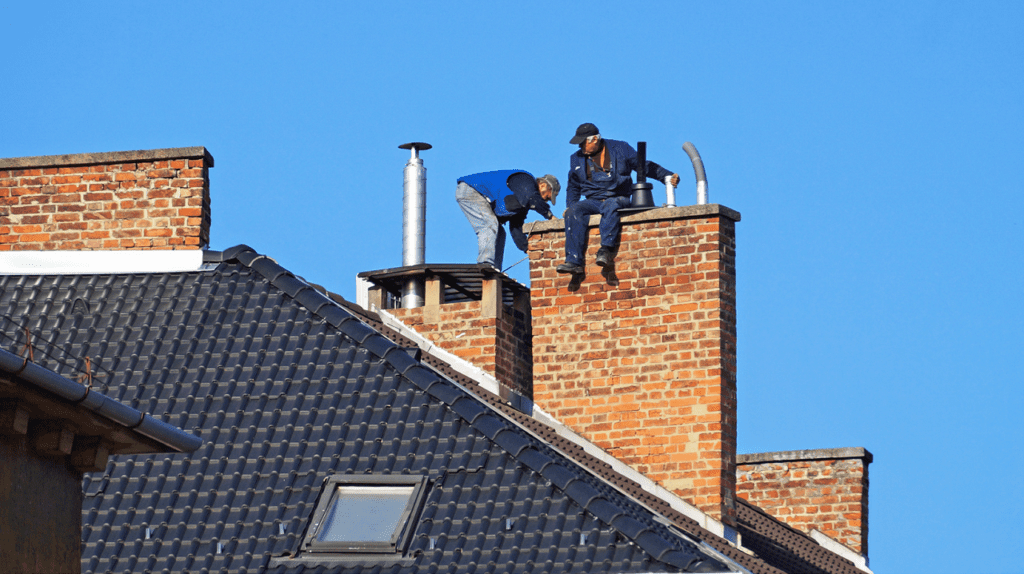
Every homeowner with a fireplace knows the importance of having a clean and functioning chimney. However, few may realize the history behind the profession responsible for maintaining and cleaning these crucial heating systems. This article will take a closer look at the profession of chimney sweeping, from its definition to its history and to its importance in modern times.
Definition of a Chimney Sweep
A chimney sweep is a trained professional who specializes in cleaning chimneys, flues, and other venting systems. Their primary task is to remove soot, ash, debris, and creosote that accumulates inside chimneys over time. Due to their access to areas of the home that are usually difficult to reach such as attics or rooftops, they can also help identify potential fire hazards.
Brief History of Chimney Sweeps
The origins of chimney sweeping date back to medieval Europe when homes were heated by coal or wood-burning stoves. The buildup of soot and other debris caused frequent fires that were often fatal for those living inside.
In response, local governments began regulating the profession with licenses required for anyone who wanted to work as a chimney sweep. In England during the 18th century, climbing boys or “apprentices” as young as six years old were used by master sweeps due to their small size and nimble abilities needed to climb up narrow chimneys.
Unfortunately, many apprentices were subjected to harsh working conditions that included long hours with little pay. Today’s modern-day chimney sweeps are highly trained professionals who have gone through extensive training programs that teach them about safety standards and regulations regarding air quality control laws.
Importance of Chimney Sweeps in the Past and Present
Chimney sweeps played an essential role in the past by preventing chimney fires, which were a common occurrence due to the use of wood and coal-burning stoves. Today, chimney sweeps remain just as important in fire prevention, but their services extend beyond that.
Their work ensures proper ventilation and efficiency of heating systems, which helps homeowners save on energy bills. Moreover, by conducting regular inspections, they detect potential hazards like cracked masonry or damage caused by animals nesting inside chimneys.
Chimney sweeps have been a vital profession throughout history and continue to serve an essential role in homes today. While it may go unnoticed at times, their expertise is necessary for the safety and comfort of our homes and families.
The Life of a Chimney Sweep
Training and Apprenticeship
Becoming a chimney sweep requires thorough training and apprenticeship. In the past, young boys were often taken in as apprentices by experienced sweeps who would teach them the trade.
Today, chimney sweep schools and training programs are available to provide formal education to aspiring sweeps. These programs typically cover topics such as chimney anatomy, safety procedures, and best practices for cleaning and inspecting chimneys.
Apprentices usually start by observing experienced sweeps on the job, gradually progressing to hands-on work under supervision. This practical experience is crucial for mastering techniques such as using different types of brushes, rods, and vacuums to clean out chimneys.
Tools and Equipment
Chimney sweeps use specialized tools to clean chimneys effectively and efficiently. The most common tools include various sizes of brushes made of wire or polypropylene bristles that attach to rods that can be extended up inside the chimney from the roof or inside the house below the flue opening.
Other tools include scrapers for removing creosote buildup, vacuum cleaners to collect debris, and inspection cameras for checking the interior condition of a chimney liner or flue tiles. Safety equipment like respirators, gloves, and face shields is also essential equipment for any professional chimney sweep.
Work Schedule & Working Conditions
Chimney sweeps often work long hours during peak season since many homeowners schedule their annual inspections around autumn when they prepare their fireplaces for winter use. During this time they may have 10-hour days with 6-7 jobs per day requiring travel between each appointment. The nature of work is physically demanding requiring climbing ladders on roofs carrying heavy equipment up 30 feet tall chimneys followed by using their strength to vigorously scrub off soot deposits from walls in tight spaces within a fireplace.
The work may also be dirty and dusty, and exposure to creosote, soot, or other chemicals can lead to respiratory problems. The life of a chimney sweep is not all glamorous as portrayed in movies and TV shows.
It requires a lot of hard work, dedication and commitment to learn the trade along with the right equipment for better results. It also demands an endless spirit of adventure as each job poses new challenges that require problem-solving skills to overcome them successfully.
The Science Behind Chimneys
Chimneys serve a vital purpose in our homes by channeling smoke and harmful gases from fireplaces and stoves to the outside air, keeping occupants safe and healthy. Understanding how chimneys work is crucial for their proper maintenance.
Essentially, a chimney creates an updraft that allows smoke to escape through its uppermost point. Warm air rises, so as the fire heats the air inside the chimney, it creates a low-pressure zone that pulls fresh oxygen into the fire and pushes gases out of the top of the chimney.
How chimneys work
Chimneys must be correctly sized for each fireplace or stove to ensure proper draft performance. If a chimney is too large or too small, it can cause problems such as drafting issues that can lead to poor combustion efficiency or even carbon monoxide poisoning. The shape of the flue also plays an essential role in creating good draft characteristics with some shapes enhancing draft performance better than others.
Common chimney problems
A common problem with chimneys is creosote buildup – a flammable substance that forms when wood burns – which accumulates on walls lining your chimney’s interior over time. When creosote isn’t cleaned off regularly, it can ignite causing dangerous chimney fires that can put your home and family at risk. Other common problems include blockages caused by debris like bird nests or leaves trapped inside your flue during colder months.
Importance of regular chimney maintenance
Regular maintenance is crucial for keeping your home safe and ensuring efficient heating system performance. A professional should inspect your chimney at least once per year as well as after any significant weather event such as a hurricane or tornado. They will check for any damages such as cracks or deterioration due to exposure to both hot temperatures from burning fires and cold temperatures from winter weather conditions.
Proper maintenance can help prevent serious problems like carbon monoxide poisoning or chimney fires, which can have disastrous effects on the safety of your home and family. It’s important to take chimney maintenance seriously and schedule regular inspections with a professional to ensure your chimney functions correctly.
The Role of Chimney Sweeps in Fire Prevention
Preventing chimney fires
Chimney fires can be devastating, causing significant damage to homes and posing a serious threat to life. As such, one of the primary roles of a chimney sweep is to prevent these fires from occurring.
Regular cleaning and maintenance help to clear out any buildup of creosote or other debris that can ignite when exposed to high temperatures. By removing these potential fire hazards, sweeps help ensure that chimneys are safe to use.
Identifying potential fire hazards
In addition to cleaning chimneys, sweeps also play an important role in identifying potential fire hazards within the home. For example, they may notice cracks or other damage in a chimney liner that could lead to a fire.
They may also identify issues with the fireplace itself, such as problems with the damper or flue. By alerting homeowners to these issues and recommending appropriate repairs or upgrades, sweeps help keep their clients safe from potential fires.
Educating homeowners on fire safety
As experts in all things related to chimneys and fireplaces, chimney sweeps also have an important role in educating homeowners on fire safety. This includes things like proper use of the fireplace, how often to have the chimney cleaned and inspected, and what warning signs may indicate a problem with the chimney or fireplace. By providing this education and guidance, sweeps help ensure that their clients are equipped with all of the knowledge they need to safely enjoy their fireplace.
Famous Chimney Sweeps in Literature and Pop Culture
Mary Poppins’ Bert the Chimney Sweep
One of the most famous representations of a chimney sweep is Bert from Mary Poppins. Played by Dick Van Dyke in the iconic 1964 film adaptation, Bert is known for his cheerful personality, impressive dance moves, and of course, his work as a chimney sweep. Bert is a beloved character whose portrayal has helped to romanticize the profession in popular culture.
Charles Dickens’ “Oliver Twist”
Another notable representation of a chimney sweep comes from Charles Dickens’ novel “Oliver Twist.” In the novel, young Oliver is apprenticed to a cruel and abusive chimney sweep named Mr. Gamfield. The depiction of the miserable working conditions experienced by sweeps in this era helped to raise awareness about the need for reform in industries like chimney sweeping.
Other notable references to chimney sweeps in popular culture
Chimney sweeps have also been featured in various other works of literature and pop culture over the years. For example, they appear as characters in books like “The Water Babies” by Charles Kingsley and “The Chimney Sweeper’s Boy” by Barbara Vine. They are also referenced in films like “Mary Shelley’s Frankenstein” and even appear as mascots for businesses such as Dick Van Dyke’s own Chimney Sweep Company.
Frequently Asked Questions
What did chimney sweeps do?
Chimney sweeps are professionals who clean and maintain chimneys. They remove soot, creosote, and potential blockages, perform inspections for damage, and can provide advice on the proper use and maintenance of the chimney.
How often should a chimney be swept?
It’s generally recommended to have your chimney swept at least once a year, particularly before the colder months when fireplaces are used more frequently. This frequency helps prevent the buildup of soot and creosote, which can pose fire hazards.
What does it mean to chimney sweep?
The term “chimney sweep” refers to a professional who is trained and often certified to clean, inspect, and repair chimneys. Their work is critical for maintaining the safe operation of the chimney and preventing potential fire hazards.
What is the difference between chimney cleaning and sweeping?
While the terms “chimney cleaning” and “chimney sweeping” are often used interchangeably, sweeping usually refers to the removal of soot and creosote from the interior of the chimney, whereas cleaning may involve a more comprehensive service including inspection for damage, cleaning the chimney cap, and ensuring the chimney’s overall condition is good.
Why was chimney sweeping bad?
Chimney sweeping was historically associated with poor working conditions, particularly during the Industrial Revolution when young children, known as climbing boys, were employed to clean chimneys. These children often faced dangerous and unhealthy conditions, such as the risk of getting stuck in the chimney, exposure to carcinogenic soot, and other physical harms.
What is a fact about chimney sweep?
An interesting fact about chimney sweeps is their longstanding association with good luck, particularly in the United Kingdom. This belief dates back to various legends, including one in which a sweep saved King George II’s life.
Why is a chimney sweep Lucky?
Chimney sweeps are considered lucky due to an old legend from the United Kingdom where a sweep saved King George II’s life by stopping his runaway horse. Since then, sweeps have been seen as symbols of good luck and it became a tradition to have a sweep at weddings to bring good fortune.
Conclusion
Chimney sweeping may not be the most glamorous profession, but it has played an important role throughout history in keeping people safe from fires and ensuring that chimneys operate effectively. Today, professional chimney sweeping services continue to be essential for maintaining safe homes with functional fireplaces.
Through their work preventing fires, identifying hazards, and educating homeowners on fire safety best practices, modern-day chimney sweeps carry on a tradition that dates back centuries – one that helps keep families warm and safe during the colder months of the year.

